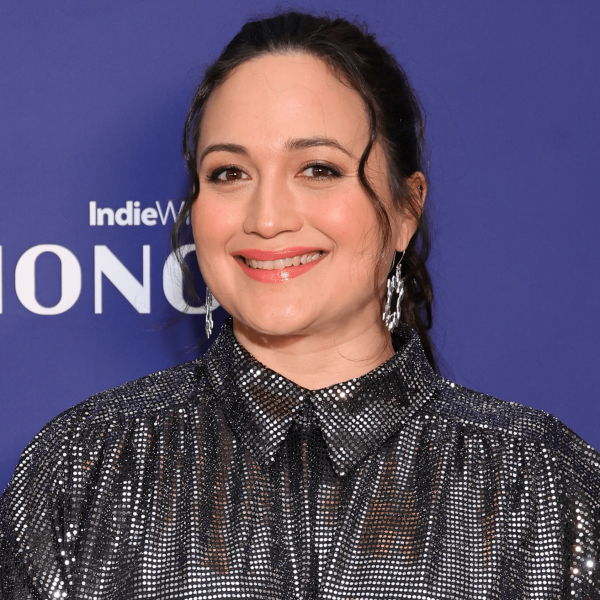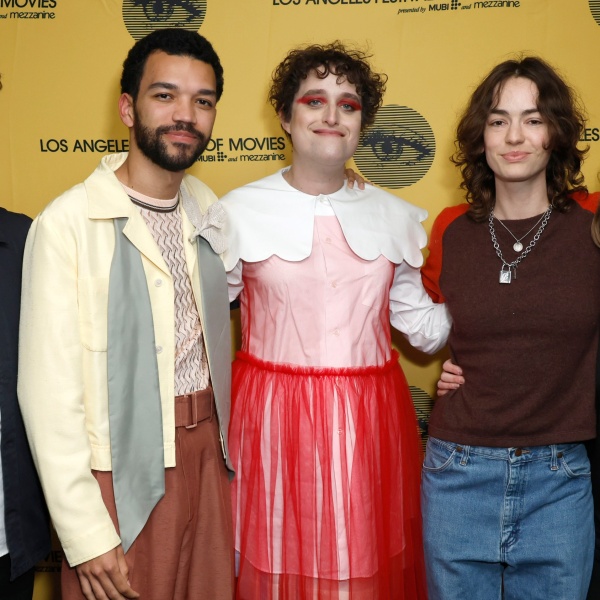Making her directorial debut for “V/H/S/Beyond” with the segment “Stowaway,” Kate Siegel knows she’s asking the world to see her differently. She just doesn’t want to think about it.
“I find it easy to talk about my acting, and I find it easy to talk about filmmaking, but I find it hard to talk about my place in the industry because I don’t want a sense of that,” Siegel told IndieWire. “I can’t allow that to get inside or it might take root and grow a really nasty tree.”
As an actress, Siegel has been there before. She’s known for frequently starring in her husband Mike Flanagan’s work, collaborating with him on projects like “Ouija: Origin of Evil,” “The Haunting of Hill House,” and “Hush,” which she also co-wrote. That success came at a cost for Siegel, who rose to fame against sexist bullying and hate made worse by social media.
“Anything you want to find on the internet, you can,” Siegel said. “I could find proof that I was a scream queen and I was amazing, and I was that breath of fresh air. I could also find that I was a monster who was horrific to look at and should probably kill herself.”
Paraphrasing Andy Warhol (“While the critics are deciding, make even more art…”), Siegel put on her PR blinders when she realized those comments were impacting her on set. Anonymous trolls derided her acting choices, physical appearance, and even voice, while streaming viewership soared and professional reviews reflected well.
“I started thinking this way instead, like, ‘Hey, it’s nice that they’re calling me a scream queen. Maybe next week they’ll call me a scream disappointment!’” Siegel said. “It’s really just none of my business.”
Still, Siegel’s recent transformation from a familiar genre face to a behind-the-scenes auteur comes up in discussions about “V/H/S/Beyond” and “Stowaway.” Now at home on Shudder in its seventh installment, the found-footage anthology is famous for giving first-time directors a low-budget, boundary-pushing opportunity to cut their teeth. But smiling in a press line with true unknowns at the film’s world premiere for Fantastic Fest, Siegel was the only famous actor (“Fur Babies” filmmaker Justin Long didn’t make it) — and the only female director.
“At the risk of sounding hyperbolic, I think every single thing about my life’s experience shows up in the art I make,” Siegel said, describing a production that gave the actress unprecedented artistic freedom and complete bodily autonomy. “What came pouring out of me when I wasn’t even intending it to was a lifetime of living in a world where it was always a check mark on my resume. ‘Check mark, she’s pretty.’ ‘Check mark, she’s thin and white.’”
“It’s a terrible thing to be praised for because you don’t control it,” Siegel said. “And when you do try to control it, things can get crazy really fast. Talk about body horror.”
In “Stowaway,” a struggling space reporter named Halley (Alanah Pearce) sets out to investigate mysterious lights spotted above the Mojave Desert before falling victim to an accidental alien abduction. That misstep eventually turns Halley into a part-spider, part-octopus humanoid for a cerebral character study that’s less action-heavy than the other segments — but arguably one of the more disturbing concepts in the “V/H/S/Beyond” collection.

Courtesy: Shudder
The story was written by Flanagan in roughly 20 minutes (“…because the man is a genius,” Siegel said) with the edict of “body horror by way of Terrence Malick.” The filmmaker had two more key inspirations for “Stowaway.” Siegel cited the Cronenberg classic “The Fly” and the scene when Jodie Foster says, “They should have sent a poet…” in Robert Zemeckis’ “Contact.”
“If I didn’t hold both of those things, the project wasn’t going to work,” she said. “I felt very confident that we were going to get the body horror. ‘V/H/S’ has done that before. They have a team of professionals set up to make that happen. My job was finding the poetry. I think Terrence Malick doesn’t make movies. He makes visual poems.”
Siegel’s striking debut uses the look of choppy camcorder footage to intercut Halley’s unfinished documentary and untimely demise with a home video of her daughter (Theodora Flanagan) that’s mostly been taped over. The result is a simple but effective look at a tortured woman’s priorities shifting in real time as she’s swarmed by glittering nanobots and forced to take on a dark new cosmic purpose.
“Like Kafka’s ‘Metamorphosis,’ it’s that human experience of waking up in a body you don’t recognize and asking, ‘Are we our bodies, or are we our minds?’” said Siegel. “It’s a very esoteric and fertile ground, and I think it speaks to the female experience in the way that perhaps the linear, running away from the slow-moving monster speaks more to the male experience.”

Courtesy: Shudder©AMC/courtesy Everett Collection
Praising “Stowaway” cinematographer Michael Fimognari profusely and naming him as an essential collaborator, Siegel recalled exploring several visual styles — including projecting images on smoke and using a mirrored room to reflect light — before shooting the spaceship and mutation sequences in infrared. The glowing, otherworldly look is complemented by an atypical approach to gore that was inspired by a DIY toy Siegel saw in a toddler’s play place.
“You take glitter and you put dish soap and vinegar and water in a jar and you shake it and it kind of floats down in this very exciting way,” the director said. “I brought that into [special effects specialist and ‘Live and Let Dive’ director] Justin Martinez and told him, ‘It should look like this.’”
Inventive resourcefulness is a prerequisite for the scrappy franchise and, in that way, Siegel’s experience was like any other filmmaker’s. And yet, there’s a unique touch to “Stowaway” that has made it critically divisive and highly emotional for some viewers. It’s a tonal outlier in not just this one film, but the “V/H/S” series writ large.
Female directors with a knack for drawing emotion from the nauseating and grotesque often get that reaction. A similar consensus surrounds Coralie Fargeat’s recent “The Substance,” starring Demi Moore as a fading Hollywood actress destroyed by an entertainment industry that treated her poorly. As of speaking with IndieWire, Siegel hadn’t seen the Cannes Best Screenplay winner yet — but reflected on the profound difference she felt walking onto set as a director.
“As an actress for 20 years, my career has been about how I look, and I mean that in exactly the way you think,” said Siegel. “My days on set would involve people touching my face and body all day. People walk up to you to adjust your clothes. People walk up to you to adjust your mic, which is often close to your breasts. People touch your face before every single take and you can ruin an entire take because a piece of hair is out of place. And it doesn’t matter how good your acting was, you have to go again because you didn’t look right.”
She continued, “I don’t think I realized how steeped I had been in that, how dark the tea had gotten until I went on set for ‘Stowaway.’ By the time we wrapped, I turned to Mike one day and I said, ‘Holy shit, I haven’t thought about my thighs in two weeks.’”
“I just didn’t think about it,” Siegel said. “When I went to go on set, it was more about like, ‘Well, I know I’m going to be crouched down, so I need to have comfy pants on.’ And ‘I’m going to sweat, and it’s going to be stinky, so I better wear a cotton.’ And ‘I’ve got to get my hair out of my face and makeup is just going to get in the way.’ It was practical dressing and practical body existence and freedom.”

Photo Credit: Wes Ellis
Siegel’s personal experience no doubt helped make “Stowaway” so arresting, further empowering the multi-hyphenate artist to embrace her specific point of view — here, taking incisive aim at her passionate protagonist’s disappearing identity. During the director’s favorite scene from the film, Halley’s camcorder floats through zero gravity and slowly turns to reveal the suffering monstrosity the intrepid journalist and flawed mom character has become.
“Being a woman means experiencing body horror over and over again,” said Siegel. “I kept getting the feedback that the shot felt long, and I kept saying, ‘No, it’s actually not long enough… slower, slower, slower.’ Then as we get closer, we hear her moaning and crying, and it’s such an important reveal. Because ‘Stowaway’ is, at its heart, a movie that’s scariest after it ends. It’s about the memories of it. It’s you realizing that’s her eternity.”
“V/H/S/Beyond” is now streaming on Shudder after premiering at Fantastic Fest 2024.




